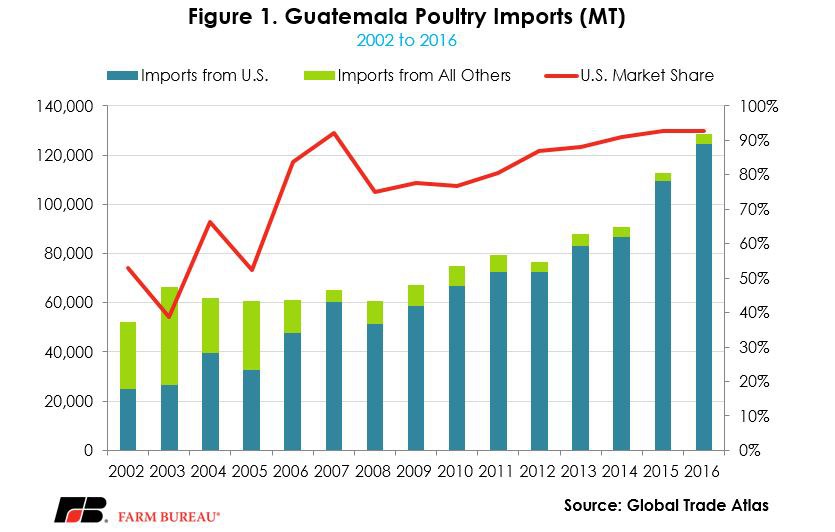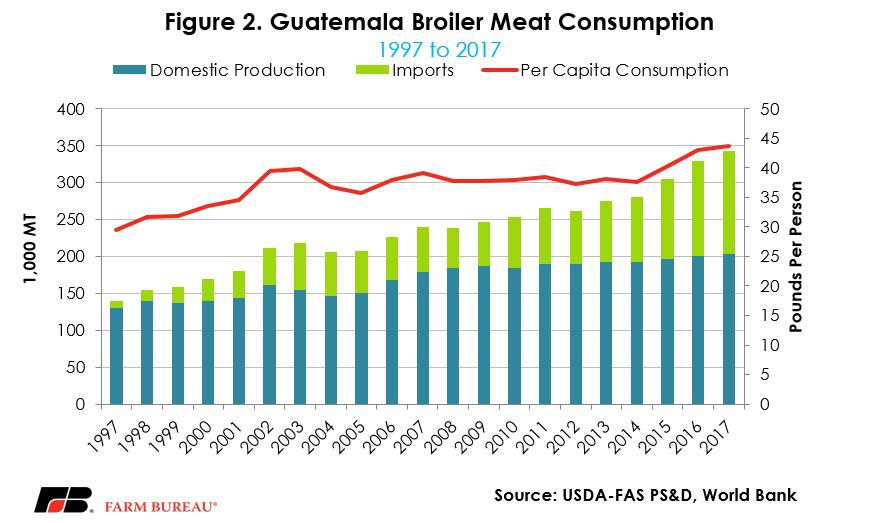Expanded Opportunities for U.S. Poultry in Guatemala

photo credit: Christopher William Adach / CC BY-SA 2.0
Veronica Nigh
Former AFBF Senior Economist
On Friday, the U.S. and Guatemala announced that Guatemala would unilaterally accelerate the elimination of its out-of-quota tariff on chicken leg quarters. This means the tariff and the tariff rate quota (TRQ) will be eliminated in 2017, five years early.
Obviously, this is great news for U.S. poultry exporters. They would have otherwise faced a 12.5 percent tariff on leg quarters into Guatemala this year. But how did this happen? And even more importantly, how can we replicate it?
Certainly, a lot of hard work by the U.S. Trade Representative’s Office was involved. But some elements of the agreement itself, as well as efforts by USDA and others, played a significant role as well.
The Dominican Republic-Central America Free Trade Agreement (CAFTA-DR) was the first agreement to include trade capacity building efforts. The goal of these efforts was to improve the ability of other government authorities to implement, execute and manage institutions that impact trade.
In Guatemala, one of the agricultural objectives was to improve their sanitary and phytosanitary system by avoiding environmental contamination, simplify waiting times and standardizing procedures and methods. Since the agreement went into force in 2005, the U.S. has helped Guatemala complete training on the inspection of bovine, porcine and poultry slaughter houses and conduct safety audits of such facilities, as well as put in place mobile, phytosanitary laboratories and improve their inspection and sampling techniques.
There are several signs that these capacity building efforts, combined with expanded market access through TRQs and lower tariffs, have been successful for all involved.
For U.S. poultry growers, Guatemala has become a major export destination. In 2005, the year before the agreement went into effect, Guatemala was the 16th largest export destination for U.S. poultry. Last year, it was sixth. U.S. market share rose from 53 percent to 93 percent over the same period, Figure 1.

Importantly, the agreement has not led to the collapse of the Guatemalan poultry industry, as some predicted. In fact, domestic production of poultry increased by 32 percent between 2005 and 2016. Rather than replacing locally grown poultry with imported poultry, Guatemalan consumers, more confident in the safety of the product, ate more --- of each! Per capita consumption has risen to slightly more than 40 pounds in 2016, a 20 percent increase from 2005, Figure 2.

This is not to say that the trade capacity building efforts have solved all trade issues with Guatemala. In fact, the 2017 National Trade Estimate Report on Foreign Trade Barriers released by the Office of the United States Trade Representative on Friday contained three-and-a-half pages on ways trade with this nation of about 17 million people could be better. But, the March 31 announcement is a sign that we’re moving in the right direction.
